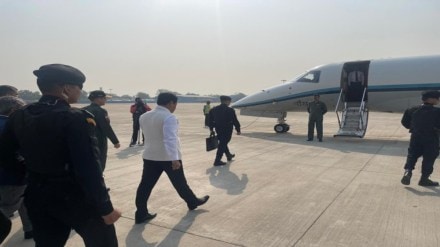In a significant move towards bolstering connectivity and trade routes, India and Iran solidified their partnership with the signing of a long-term pact for the management of the Chabahar port. On Monday (May 13, 2024), during his visit to Tehran on May 13, 2024, Minister of Shipping, Ports and Waterways Sarbananda Sonowal witnessed the signing of the new 10-year Contract between India Ports Global Ltd (IPGL) and Ports & Maritime Organisation of Iran (PMO).
Under the Contract, IPGL will commit to further equip and operate the port for the duration of the Contract. At the end of the 10-year period, both sides would further extend their cooperation in Chabahar. IPGL will invest approximately US$ 120 million in equipping the port. India has also offered an INR credit window equivalent to USD 250 million, for mutually identified projects aimed at improving Chabahar-related infrastructure.
This landmark agreement marks India’s maiden venture in managing a port overseas, showcasing a promising avenue for enhancing regional connectivity.
Location of Chabahar
Chabahar, a deep-water port located in Iran’s Sistan-Baluchistan province, holds a pivotal position due to its proximity to India and its location in the open sea, offering easy access for large cargo ships.
During Prime Minister Modi’s visit to Iran in May 2016, India, Iran, and Afghanistan inked a Trilateral Agreement, paving the way for the establishment of the International Transport and Transit Corridor, also known as the Chabahar Agreement.
India has been actively involved in the initial phase’s development, particularly in the Shahid Behesti Terminal, through collaborative efforts with the Iranian government.
India’s contributions include the provision of 06 Mobile Harbour Cranes, along with other equipment valued at USD 25 Million. In December 2018, India Ports Global Limited (IPGL) assumed operations of the Chabahar Port via its subsidiary, India Ports Global Chabahar Free Zone (IPGCFZ).
Since then, the port has witnessed significant traffic, handling over 90,000 TEUs of Container traffic and more than 8.4 MMT of Bulk and General Cargo. Moreover, it has played a crucial role in facilitating humanitarian aid, particularly during the COVID-19 pandemic. Notably, it has facilitated the trans-shipment of 2.5 million tons of wheat and 2000 tons of pulses from India to Afghanistan, and in 2021, facilitated the transport of 40,000 litres of environment-friendly pesticide to Iran.
Background
In August 2023, Prime Minister Modi and President Raisi of Iran met during the BRICS Summit in Johannesburg, where they emphasized the importance of finalizing and signing the pending long-term contract for Chabahar Port, providing a significant political push.
Chabahar Port has emerged as a crucial maritime gateway for landlocked countries in the region, notably Afghanistan, offering a more cost-effective and stable route to access India and global markets.
Importance of the Chabahar Port & Alternate to BRI
The strategic importance of Chabahar Port cannot be overstated. Situated along the Gulf of Oman, it offers India a crucial gateway to Afghanistan and beyond, circumventing the need to rely on Pakistan’s Karachi port. This alternative route not only ensures uninterrupted trade flow but also serves as a critical point in India’s efforts to counterbalance China’s Belt and Road Initiative.
Despite facing setbacks due to US sanctions on Iran, the development of Chabahar Port persisted, underscoring its strategic value. Prime Minister Narendra Modi’s commitment to the port’s development, with a pledge of US$500 million investment during his 2016 visit to Tehran, laid the foundation for transformative regional connectivity. The subsequent trilateral transit agreement with Afghanistan further cemented Chabahar’s role as a linchpin in facilitating trade between India, Afghanistan, and Central Asian countries.
INSTC & Connectivity & Chabahar Port
At the heart of Chabahar’s significance lies its integration within the International North-South Transport Corridor (INSTC), envisioned to link Russia’s Baltic Sea coast to India’s western ports via Iran. With the participation of 13 countries, including India, Russia, Iran, and others, the INSTC represents a concerted effort to establish a seamless transport corridor spanning thousands of kilometers. The revamped agreement, set to replace the original pact, underscores the enduring commitment of participating nations towards realizing this ambitious vision.
Beyond its economic implications, the Chabahar port pact carries geopolitical significance, serving as a strategic response to the China-Pakistan Economic Corridor (CPEC). By bolstering connectivity through Chabahar, India aims to reinforce its regional influence while providing an alternative to China’s expanding economic footprint in the region.
Crucially, the long-term nature of the agreement ensures stability and continuity in operations, fostering an environment conducive to sustained collaboration and investment. India’s steadfast engagement, despite the backdrop of domestic political processes such as elections, underscores the strategic imperative of enhancing connectivity and fostering regional partnerships.
With India’s continued investment and operationalization of Chabahar Port, it is poised to become a vital nexus, connecting landlocked countries in Central Asia and Afghanistan with India’s burgeoning economy.
